Description
The Akai LPD8 is a compact and portable MIDI controller that has been designed to offer producers and live performers a versatile way to control their software and hardware. This MIDI device is sleek and lightweight, making it easy to carry around. In this article, we will look at what the Akai LPD8 has to offer and how it can be used.
Design
The Akai LPD8 is a compact device that measures 13.4 x 3 x 10.7 cm and weighs only 310 grams. It has an all-black finish with two rows of eight backlit, velocity-sensitive drum pads that can be used for triggering drums, samples, and loops. The pads have four memory banks for storing different sets of MIDI data, which means that users can switch between different presets.
In addition to the drum pads, the Akai LPD8 also has eight assignable knobs that can be used to control parameters such as volume, filter, and effects. The knobs are set up so that they work in conjunction with the eight corresponding pads, and can also be assigned to other parameters.
Connectivity
The Akai LPD8 is powered by USB and connects to a computer or device using a USB cable. It is a class-compliant device, which means that it does not require drivers for installation. This makes it easy to use with different software programs and platforms.
Apart from USB connectivity, the Akai LPD8 also has MIDI output and input for connecting to external synths, drum machines, or other MIDI-enabled devices. This is particularly useful for musicians and producers who want to incorporate hardware instruments or effects into their workflow.
Software Integration
The Akai LPD8 is compatible with many popular music software programs, including Ableton Live, FL Studio, Logic Pro X, and Pro Tools. In most cases, the device can be instantly recognized by the software, and the pads and knobs can be assigned to different functions.
Akai also offers a free software editor for the LPD8, which can be downloaded from their website. The editor allows users to customize the MIDI data sent by each pad and knob, as well as change other settings such as the velocity curve.
Conclusion
The Akai LPD8 is a versatile and portable controller that can be used in many different settings. With its backlit pads and assignable knobs, it allows for expressive and dynamic performances. Its compact size and USB-powered connectivity make it an ideal addition for traveling musicians, or producers with limited desk space. Overall, the Akai LPD8 is a solid choice for anyone who needs a reliable and flexible MIDI controller.
Akai LPD8 properties
| Product name | LPD8 |
| Brand | Akai |
| Type | Keyboard Instruments |
| Keyboard Instrument | MIDI Keyboard |
| Pads | Yes |
| Rotary Controls | Yes |
| Colour | Black |
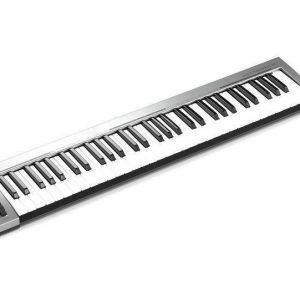 Acorn Masterkey 61
Acorn Masterkey 61 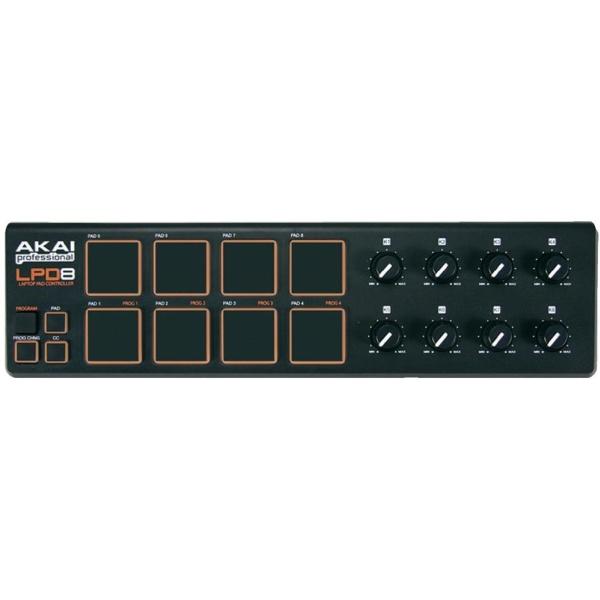
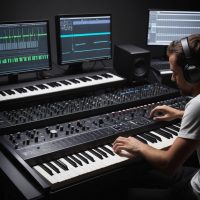
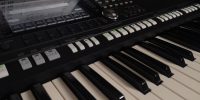
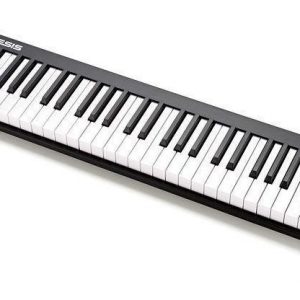
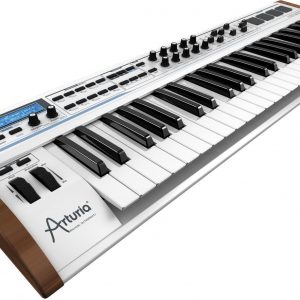
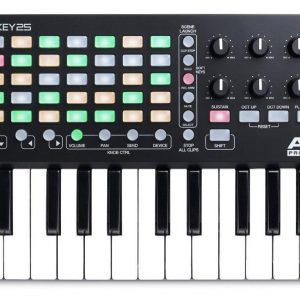
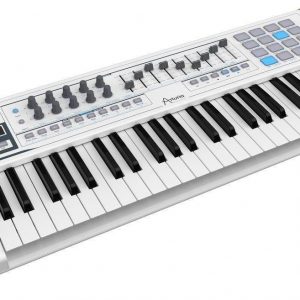
Mckenzie –
I recently purchased the Akai LPD8 MIDI Keyboard and overall, I have to say that I was really disappointed. Firstly, the black color wasn’t particularly impressive or sleek. In fact, I found it a bit underwhelming in terms of design. Secondly, although the rotary controls were responsive and easy to use, they didn’t make up for the keyboard’s many shortcomings.
Compared to other MIDI keyboards on the market, the LPD8 falls disappointingly short. Not only is it lacking in features, but I found the overall quality of the keyboard to be lacking as well. As someone who works in the music industry, I was really hoping that the LPD8 would become a staple of my work setup. However, I’m afraid that won’t be the case.
One of the biggest issues I encountered was the delay in delivery. Although I ordered the keyboard in December, it took over a month for it to arrive in Atlanta. This was really frustrating and makes me question the reliability of ordering online.
Overall, I can only give the Akai LPD8 a 2 out of 5 possible rating. While the rotary controls were a highlight, they weren’t enough to offset the keyboard’s many deficits. If you’re in the market for a MIDI keyboard, I would definitely recommend looking elsewhere.
Nathan –
I recently picked up one of those fancy MIDI keyboards that everyone’s been raving about. My friend Emmett Kemp convinced me to treat myself (or rather, him) and now I have a new toy to play with. And let me tell you, it’s been a game-changer. The freedom to create is exhilarating, almost as much as the thrill of outsmarting the tariff system.
So, if you’re in the market for one of these MIDI keyboards, here are some tips and tricks that might help: first of all, make sure you have a good understanding of what you want to achieve with your keyboard. Are you looking to create complex synths or just noodle around? Knowing your goals will help you choose the right keyboard for you.
Also, don’t be afraid to experiment! MIDI keyboards are all about pushing boundaries and trying new things. And hey, if you’re feeling adventurous, you can even try using it in conjunction with those fancy drum machines from Midland – just kidding, they’re probably not as great as everyone makes them out to be.
In all seriousness though, the Akai LPD8 (ahem) has been a revelation for me. The build quality is top-notch, the keys are responsive, and the interface is intuitive. It’s also surprisingly lightweight, which is perfect for those who want to take it on the go.
As I sit here writing this review, I’m reminded of Tim Cook’s words: We’re very engaged on the tariff discussions. Well, I suppose that’s one way to look at it. While Apple may not be announcing price increases yet, they’re certainly keeping us customers in the dark. But hey, at least we have our MIDI keyboards to keep us company.
All joking aside, if you’re looking for a high-quality MIDI keyboard that will take your music to the next level, look no further. Just don’t expect any price hikes from Apple anytime soon – unless they decide to tariff themselves into oblivion, of course.